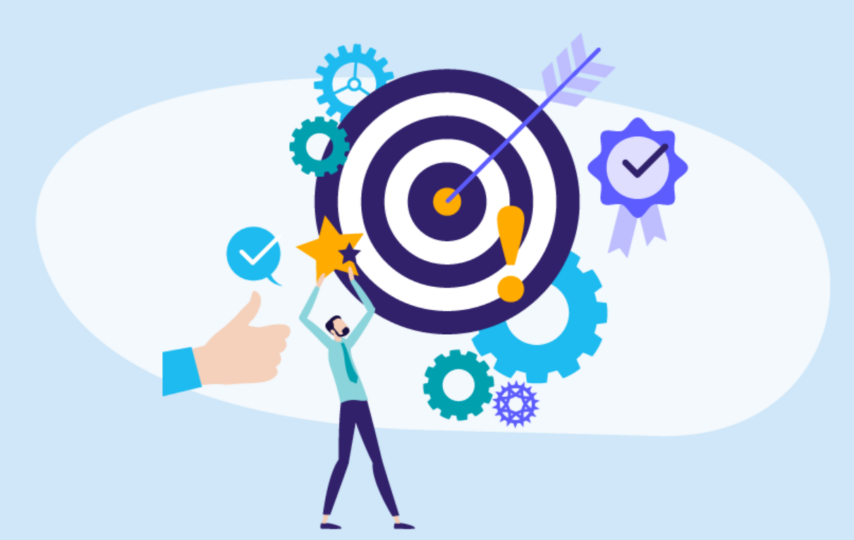An organization’s capacity to effectively manage performance is one of the most important aspects of its success. Developing a culture that fosters continuous growth requires setting specific objectives, providing staff with consistent feedback, and recognizing and rewarding workers for their efforts.
In this article, we will discuss the most effective techniques to manage performance, which can assist businesses in getting the most out of their employees and improve the business’s success as a whole.
Companies can achieve their objectives by using these tactics, which will increase the involvement of their employees, the productivity of those people, and the companies’ overall output.
Clear Goal Setting
“Setting clear goals is the first step to managing performance well. It includes setting SMART (specific, measurable, achievable, relevant, and time-bound) goals that are in line with the organization’s goals. Taking advantage of okr software can help you deal with any problems that may arise.”
Make goals clear to workers and make sure they know what is expected of them. Goals should be looked at often and changed as priorities or events change.
This process gives employees the freedom to focus their efforts on goals that matter and gives managers a way to measure success.
Ongoing Feedback and Coaching
For continuous growth, you need to get feedback and coaching on a regular basis. Managers should give workers positive feedback on a regular basis, pointing out their strengths, addressing areas where they can improve, and giving them advice on how to grow.
Encourage two-way communication so that workers can talk about their ideas and problems. Coaching meetings can help people learn new skills, improve their performance, and move up in their careers.
By utilizing an employee recognition platform, organizations can facilitate the process of feedback and coaching. This platform provides a centralized system for managers and employees to give and receive feedback, track progress, and set goals.
It enables timely and targeted recognition, allowing managers to provide comments and direction at the right time. By leveraging an employee recognition platform, organizations can help employees reach their full potential, foster a culture of continuous learning, and create an environment where feedback and coaching are integral to personal and professional growth.
Performance Evaluation and Measurement
Set up a fair and objective way to evaluate employee success based on how well they meet set goals and expectations. Use emotional and quantitative measures, such as key performance indicators (KPIs), 360-degree feedback, and self-assessments.
Check on work, go over what’s been done, and look for ways to improve on a regular basis. This process of evaluating gives useful information for personal development plans and helps people make smart choices about promotions, rewards, and recognition.
Continuous Learning and Development
By giving workers chances to grow, you can encourage a culture of continuous learning and development. Give them access to training programs, workshops, and other tools that will help them learn and improve their skills.
Encourage job switching and internal mobility to give workers new challenges and help them learn more. Help employees set personal growth goals and give them the tools and guidance they need to reach them.
By putting money into employee development, companies can keep their workers motivated and improve their total performance.
Regular Check-ins and Performance Conversations
In addition to official performance reviews, it’s important to have regular check-ins and conversations about performance to keep the lines of communication open.
Managers and employees should meet one-on-one from time to time to talk about progress, problems, and new possibilities. These talks are a chance to give feedback, talk about worries, and make sure everyone knows what to expect.
Encourage managers to listen carefully, ask deep questions, and help their workers. Regular check-ins improve relationships, make sure everyone knows what to expect, and create a space for everyone to grow and work together.
Recognition and Rewards
Recognize and reward workers for what they have done and how they have helped. Celebrate achievements, give praise for great work, and reinforce the behaviors you want to see more of.
Set up an official recognition program with both financial and non-financial rewards, such as bonuses, public praise, certificates, or chances to move up in the company.
Rewarding and recognizing workers not only get them to work harder but also makes the workplace a better place to be and reinforces a high-performance culture.
Performance Improvement Plans
Performance improvement plans (PIPs) should be used when employees are not meeting performance standards. PIPs list specific areas where employees can improve, set clear goals, and give workers ways to get help meeting those goals.
Work together with your employees to find problems, give them the tools they need, and set improvement goals. Throughout the PIP time, you should keep an eye on progress and give feedback.
PIPs show that the company cares about the employee’s growth and let the employee show that they can meet standards.
Conclusion
Effective performance management is a continuous process that makes sure that each person’s success is in line with the goals of the organization.
By using these best practices, organizations can build a performance-driven culture that helps employees reach their full potential and leads to success as a whole.
Setting clear goals, getting feedback on a regular basis, evaluating performance, learning all the time, frequent check-ins, recognition, and rewards are all ways to keep employees engaged, help them grow, and make them happy.
When performance management is a top priority, it gives workers the tools they need to do their best, creates a high-performance work culture, and sets up organizations for long-term growth and success.








